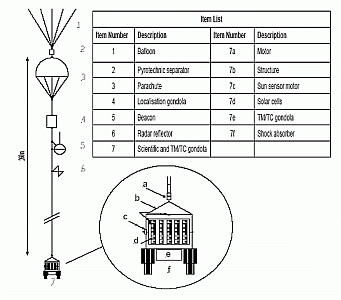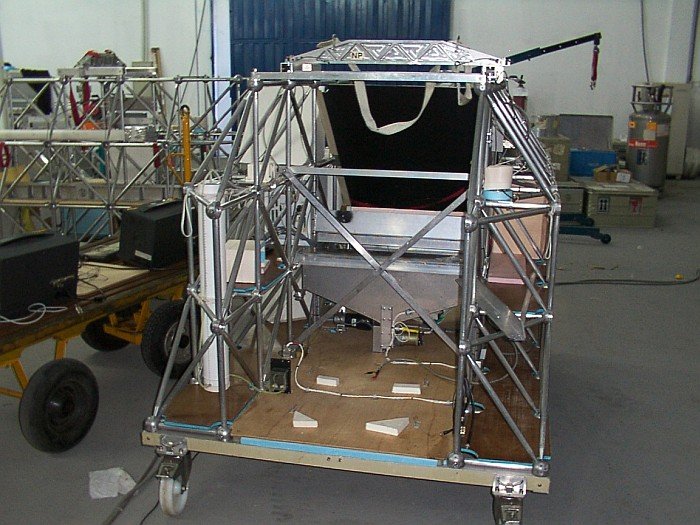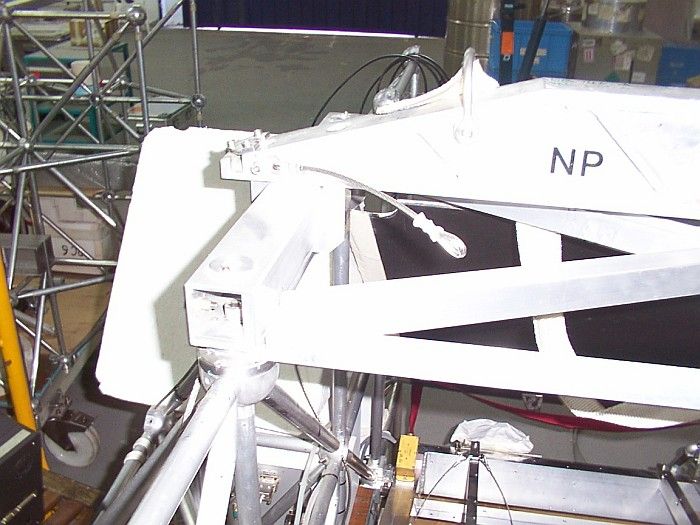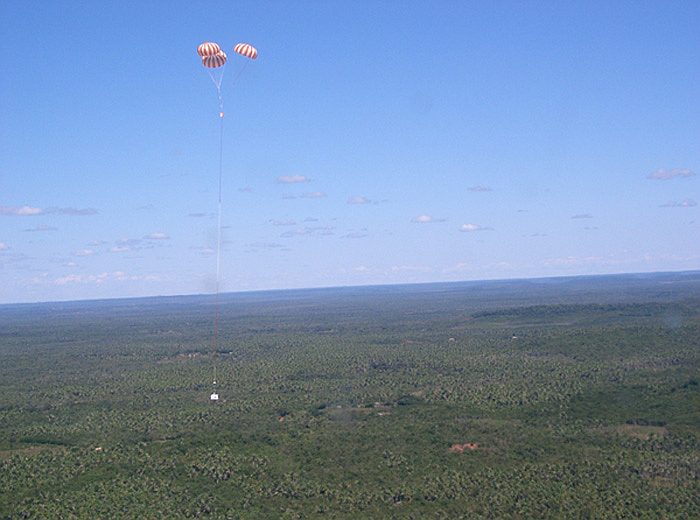Purpose of the flight and payload description
A highly sophisticated gondola specializing in air mass zero (AM0) calibration of solar cells.
Calibrations are performed fliying the gondola on-board stratospheric balloons at high altitudes (>36 km) where the solar spectral irradiance is very close to AM0. The cells calibrated in this way can subsequently be used as standard solar cell in various laboratory tasks for solar cell characterization by sun simulators.
CNES is the only laboratory in Europe carrying out calibration of this type above the atmosphere.
At left is a drawing of the balloon/payload system (click to enlarge).
The CNES calibration flights have flown from Aire sur l'Adour or Gap (in France) facilities since 1975. The flights are scheduled between June and September, since the Sun is high in the sky at this time of year so that the sunlight passes through a minimal thickness of the atmosphere before reaching the solar modules.
Details of the balloon flight
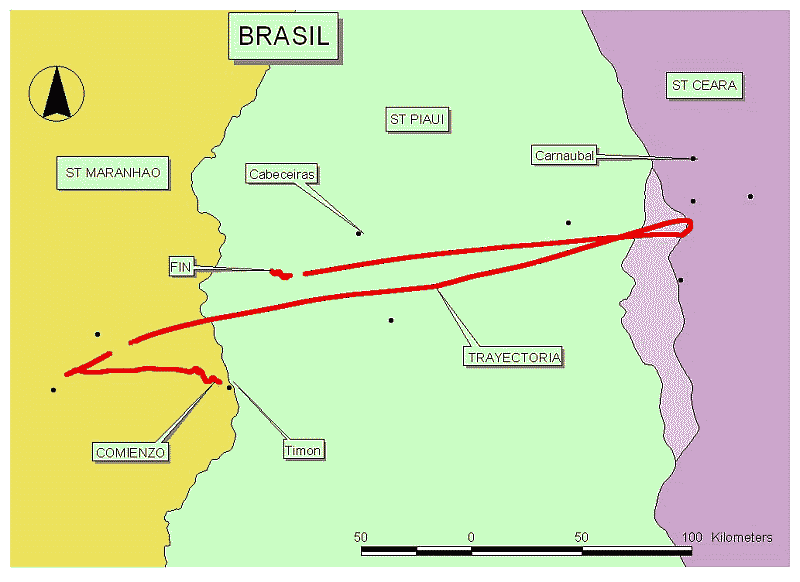
Balloon launched on: 7/7/2005 at 5:38 local
Launch site: Domingos Rego Aerodrome, Timón, Maranhao, Brazil
Balloon launched by: Centre National d'Etudes Spatiales (CNES)
Balloon manufacturer/size/composition: Zero Pressure Balloon model 150z Zodiac - 150.000 m3
End of flight (L for landing time, W for last contact, otherwise termination time): 7/7/2005 at 12:39 local
Balloon flight duration (F: time at float only, otherwise total flight time in d:days / h:hours or m:minutes - ): ~ 7 h
Landing site: NW of the city of Jose de Freitas in Piauí state, Brazil.
Campaign: ELBC (Equatorial Large Balloon Campaign)
Payload weight: 370 kg
The balloon was launched at 5:38 local time on July 7th 2005 by dynamic method assisted by auxiliary balloon.
After a initial ascent phase with a flight path due to west the balloon turned his trajectory to the east after reach float altitude, fliying over Piauí state and then fliying for a while over the neighbor state of Ceara as can be apreciated in the map at left (click to enlarge).
In the final part of the flight, the balloon returned to his west heading route until the separation command was transmited at 12:39 local time.
The payload landed undamaged northwest of the city of Jose de Freitas in Piauí state, aproximately 50 kms NE from launch site.
This flight was the first to be conducted in the ecuatorial and no less than 47 measurement-gathering sessions were completed at temperatures ranging from -12°C to -60°C.
The results will be used by various CNES's international partners, including space agencies (ESA, JAXA), industrial contractors (Alcatel, Astrium, Spectrolab), laboratories and CNES project
teams (Pleiades).
External references
- Nacelles Pointees Division CNES (Centre National d'Etudes Spatiales)
- Balloons launched over Equatorial Brazil validate Envisat ESA website
- Casolba, enhancing the quality of solar arrays information of the flight from CNES website
- Casolba: Balloon Calibration of Solar Cells E3S Web of Conferences 16, 02001 (2017)
2031If you consider this website interesting or useful, you can help me to keep it up and running with a small donation to cover the operational costs. Just the equivalent of the price of a cup of coffee helps a lot.

